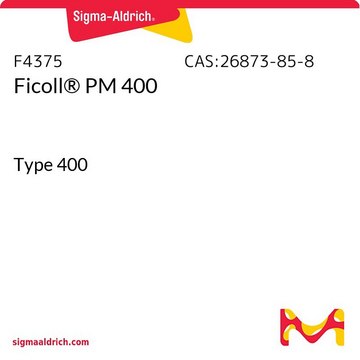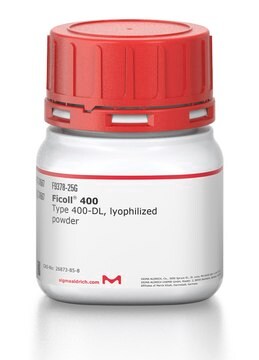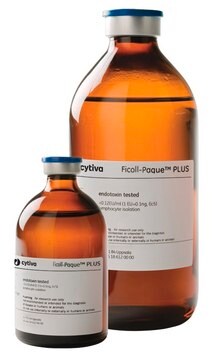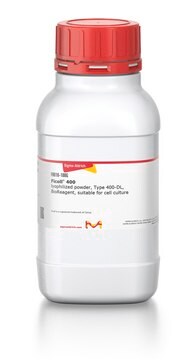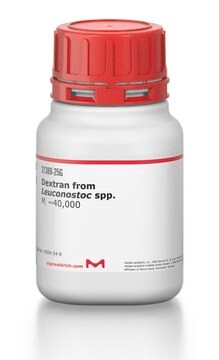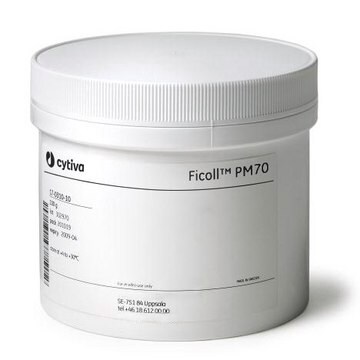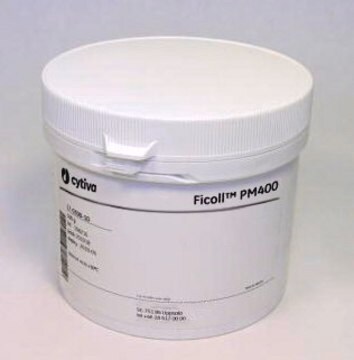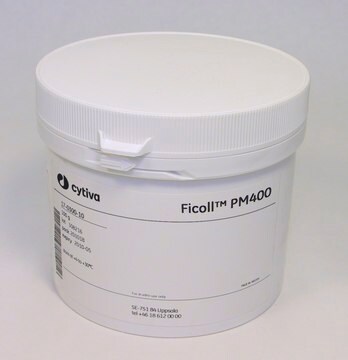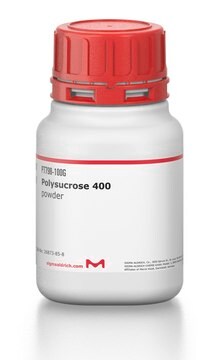F2878
Ficoll® PM 70
Type 70
Synonym(e):
Poly-(saccharose-co-epichlorhydrin)
About This Item
Empfohlene Produkte
Typ
Type 70
Qualitätsniveau
Form
powder
Mol-Gew.
~70,000
Farbe
white
Löslichkeit
H2O: soluble 100 mg/mL, clear to slightly hazy, colorless to faintly yellow
Suchen Sie nach ähnlichen Produkten? Aufrufen Leitfaden zum Produktvergleich
Allgemeine Beschreibung
Anwendung
- as a macromolecule in a comparative study to evaluate its effect in vitrification solutions
- as a supplement in the vitrification solution for the vitrification procedure of oocytes
- as a component of low serum medium for human lung fibroblast cell culture to promote a crowded environment
Biochem./physiol. Wirkung
Sonstige Hinweise
Rechtliche Hinweise
Lagerklassenschlüssel
11 - Combustible Solids
WGK
WGK 3
Flammpunkt (°F)
Not applicable
Flammpunkt (°C)
Not applicable
Persönliche Schutzausrüstung
Eyeshields, Gloves, type N95 (US)
Analysenzertifikate (COA)
Suchen Sie nach Analysenzertifikate (COA), indem Sie die Lot-/Chargennummer des Produkts eingeben. Lot- und Chargennummern sind auf dem Produktetikett hinter den Wörtern ‘Lot’ oder ‘Batch’ (Lot oder Charge) zu finden.
Besitzen Sie dieses Produkt bereits?
In der Dokumentenbibliothek finden Sie die Dokumentation zu den Produkten, die Sie kürzlich erworben haben.
Kunden haben sich ebenfalls angesehen
Unser Team von Wissenschaftlern verfügt über Erfahrung in allen Forschungsbereichen einschließlich Life Science, Materialwissenschaften, chemischer Synthese, Chromatographie, Analytik und vielen mehr..
Setzen Sie sich mit dem technischen Dienst in Verbindung.